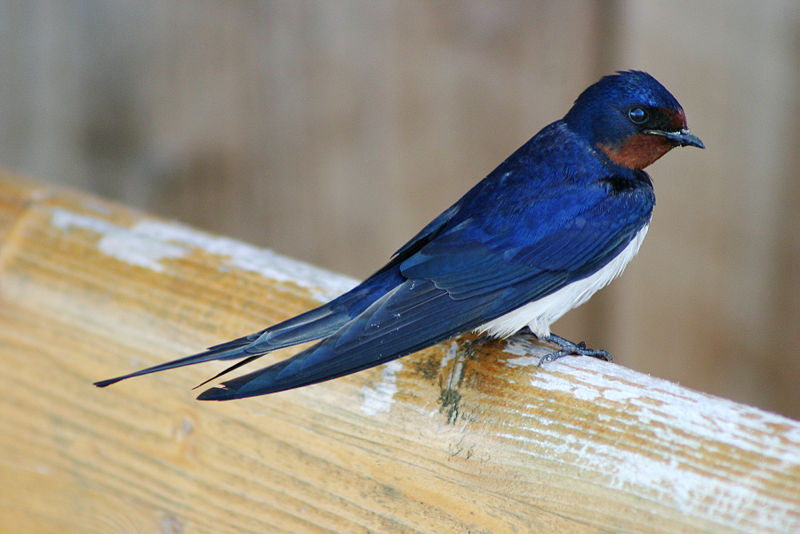March 28
Posted by sydney on Mar 28th, 2009

Hirundo rustica, photo by Malene Thyssen courtesy of Wikipedia.
- 1793: March 28, 1793 – Snow does not lie, ice, frost, & icicles all day.
- 1791: March 28, 1791 – Sowed a large plot of parsnips, & radishes in the orchard. Crocus’s fade & go off. Sowed also the Coss lettuce with the parsnips.
- 1790: March 28, 1790 – Small birds, Tanner says green finches, pull off my polyanth blossoms by handfulls. A neighbour complained to me that her house was over-run with a kind of black-beetle, or, as she expressed herself, with a kind of black-bob, which swarmed in her kitchen when they get up in a morning before day-break. Soon after this account, I observed an unusual insect in one of my dark chimney-closets; & find since that in the night they swarm also in my kitchen. On examination I soon ascertained the Species to be the Blatta orientalis of Linnaeus, & the Blatta molendinaria of Mouffet. The male is winged, the female is not; but shows somewhat like the rudiments of wings, as if in the pupa state. These insects belonged originally to the warmer parts of America, & were conveyed fro thence by shipping to the East Indies; & by means of commerce begin to prevail in the more N. parts of Europe, as Russia, Sweden, & c. How long they have abounded in England I cannot say; but have never observed them in my house ’till lately. They love warmth, & haunt chimney-closets, & the backs of ovens. Poda says that these, & house-crickets will not associate together; but he is mistaken in that assertion, as Linn. suspected that he was. They are altogether night insects, lucifugae, never coming forth till the rooms are dark, & still, & escaping away nimbly at the approach of a candle. Their antennae are remarkably long, slender, & flexile.
- 1789: March 28, 1789 – Snow did not lie. Apricots begin to blow. Earthed the nearing cucumber-bed. The plants in the seedling-bed grow, & want room. N. Aurora.
- 1787: March 28, 1787 – Timothy continues to lie very close.
- 1786: March 28, 1786 – On this day the streets of Lyons were covered with snow.
- 1782: March 28, 1782 – Poor Timothy was flooded in his hybernaculum amidst the laurel-hedge; & might have been drowned, had not his friend Thomas come to his assistance & taken him away.
- 1780: March 28, 1780 – The tortoise puts-out his head int he morning.
- 1776: March 28, 1776 – Hirundo domestica! Hirundo agrestis! Blackbirds are mostly destroyed by shooters. Farmer Tredgold saw five hirundines at Willey-mill next Farnham playing about briskly over the mill-pond: four, he says, were house-swallows, & the fifth an house-martin with a white rump. These birds are very early! Some few bank-martins haunt round the skirts of London, & frequent the dirty pools in St. George’s fields, & near White-chappel: perhaps they build in the scaffold-holes of some deserted house; for steep banks there are none.
- 1774: March 28, 1774 – Hot sun. Great thunder-shower at Winton.
- 1773: March 28, 1773 – Sharp air. Three swallows were seen I hear this day over the paper-mill pond at Bramshot.
- 1772: March 28, 1772 – The ground too wet for ploughing.
- 1771: March 28, 1771 – Snow at night. A flock of lapwings haunt about the common.
- 1769: March 28, 1769 – Oedicnemus appears & whistles.
Notes:
I was going to head this with a picture of a cockroach to commemorate one of the earliest mentions of the Oriental roach in Europe, but I went with the swallow instead. White is mistaken about the route of the roach– latest wisdom is that the species he mentions is from eastern Russia and spread from there to both Europe and America. Oedicnemus is the stone curlew.
 Theme Ported to
Theme Ported to